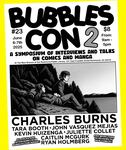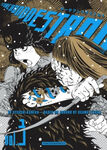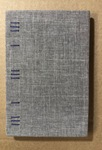
<<•>> edited by Alex Spiro; introduction by Paul Gravett <<•>>
The fine folks at the London-based NoBrow Ltd. have produced their first anthology, and it's a doozy! Editor, Alex Spiro has assembled twenty-four artists and, with a nod to The Book of Genesis, asked each of them to "take on seven pages to tell their tales of the creation of everything." As those who are familiar with the NoBrow works on display here at Copacetic already know, their publications are finely crafted and produced in an engaged, hands-on manner, in keeping with the company's stated aim "to place a renewed focus on quality in print." NoBrow maintains a special focus on hand-separated planes of flat color that gives their entire catalogue a wholly unique feel, and now, with A Graphic Cosmogony, they have produced an amazing 176 page hardcover volume – by a large margin the most ambitious assemblage they have yet to produce – that will pop your eyes out and knock your socks off!
Here's an excerpt from Paul Gravett's introduction, to give you an idea of where purveyors of this epic tome are coming from:
This anthology is the most impressive we've seen since the last Kramers Ergot. A Graphic Cosmogony is a standout in its ambition, scope and execution. We can't help but get on our Copacetic Soap box here and single out one story in particular for praise: "Pilgrims," by Jon McNaught. This story is not only a true tour de force in comics, with its greatest level of achievement lying in its masterful employment of page layout and the grid to indicate temporal and spatial duration, but it is one of the only stories we can think of that has ever directly addressed the relationship between the contemporary visual storytelling methods employed by comics and the tradition of visual instruction that was an integral part of Chrisitanity for over a thousand years. "Pilgrims" A) tells the story of "pilgrims" (there is certainly some irony involved in the use of this term) from, we are intended to assume, the Protestant north visiting a, presumably, Italian Catholic chapel; B) deftly parallels the chapel architecture with the architecture (grid) of the comics page and then links them together through the narrative panel art displayed on the chapel walls; C) relates this all to commodified consumerism which further links it to the history of comic books as being both art and commodity; and thus D) gives us an essential history of Europe (and, by extension, "the West" including America) through revealing the key linkages between religion, the visual arts and capitalism. All in seven pages. A work of inspired genius, we say.
It looks like this has finally gone out of print. We are now working to source the best available copies. Those offered here will be the best available and as close to new as possible; at least Very Good.










